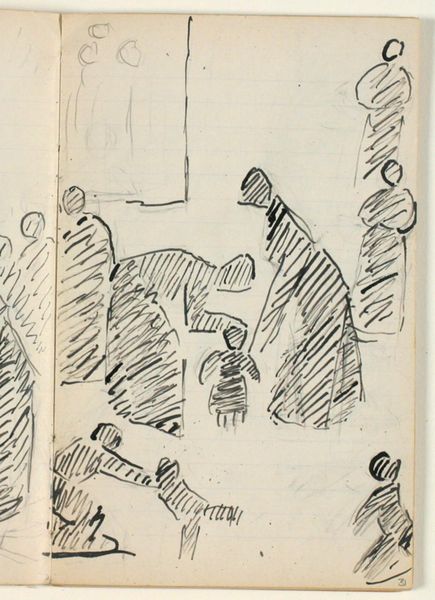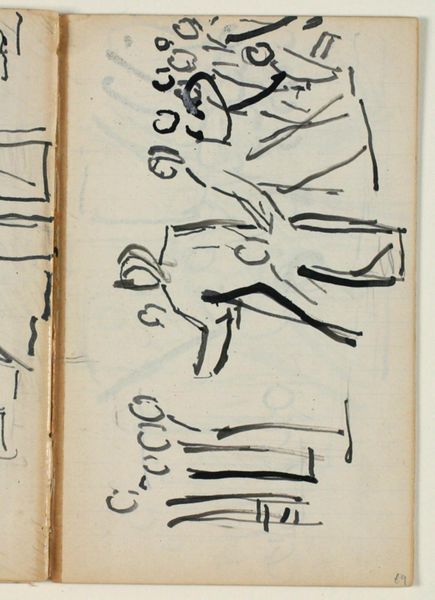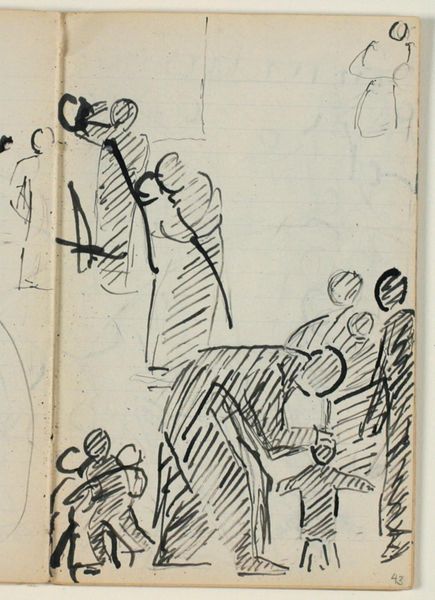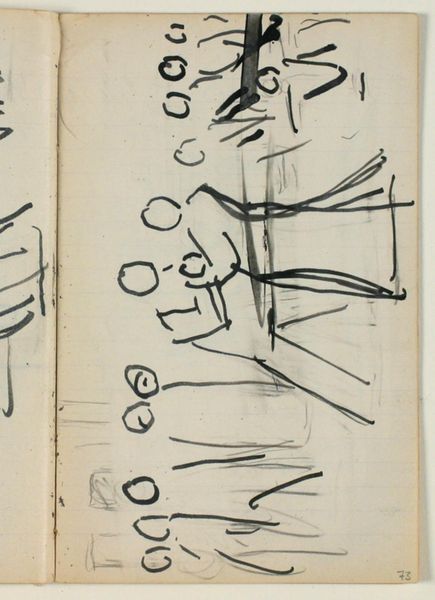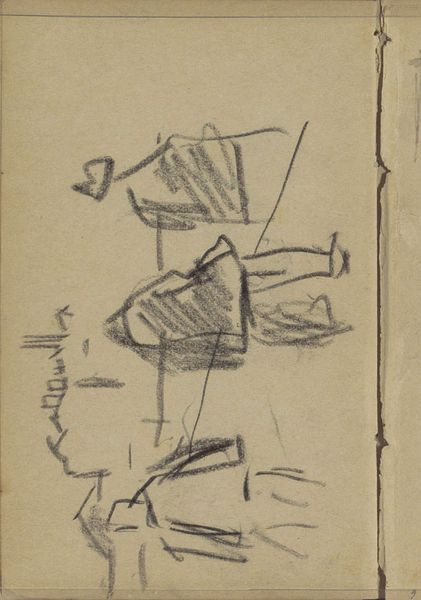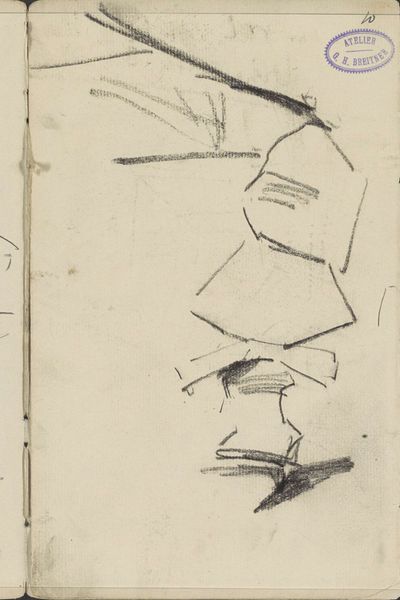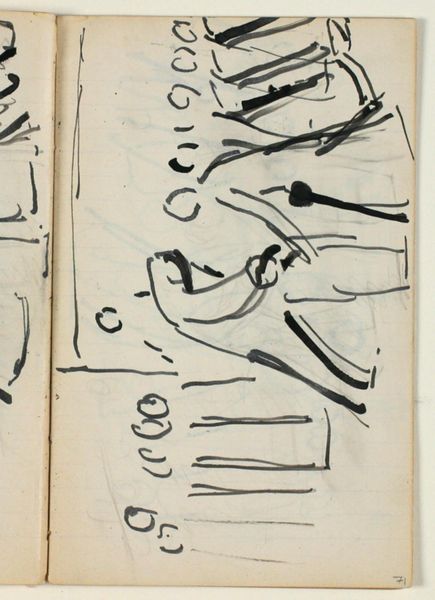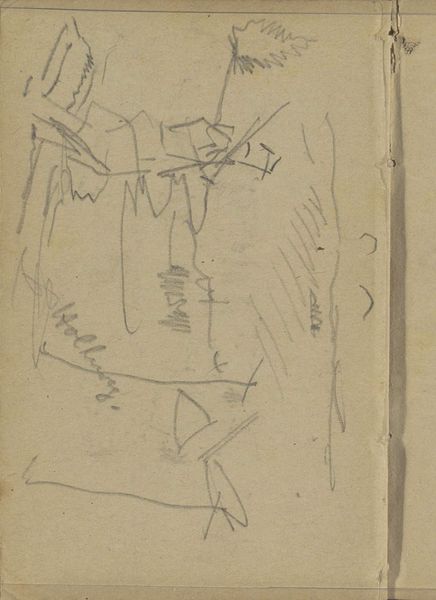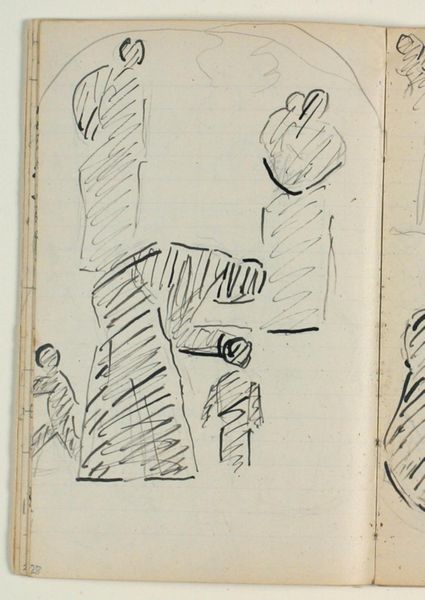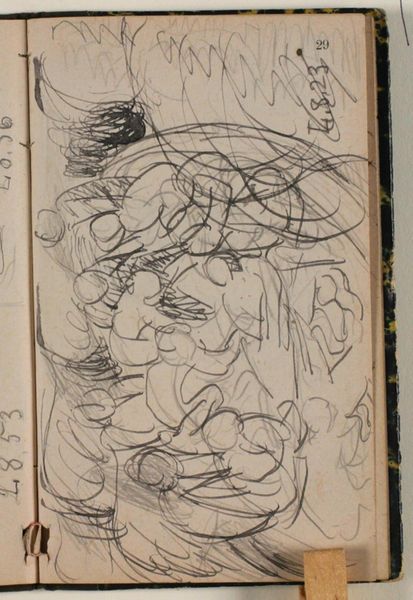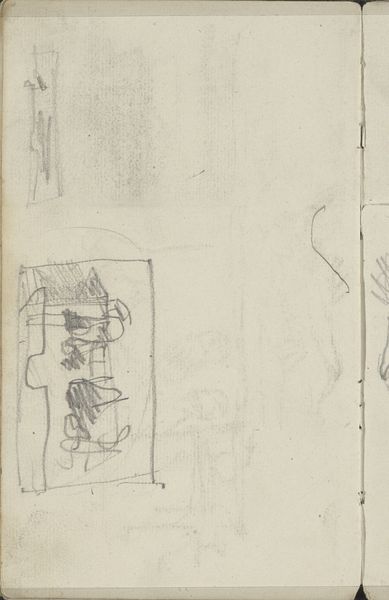
Udkast til "Kristus velsigner de små børn" 1937 - 1938
0:00
0:00
drawing, paper, ink
#
drawing
#
landscape
#
figuration
#
paper
#
ink
#
line
Dimensions: 178 mm (height) x 111 mm (width) x 5 mm (depth) (monteringsmaal), 178 mm (height) x 111 mm (width) (bladmaal)
Curator: Here we have a sketch by Niels Larsen Stevns, created between 1937 and 1938, entitled "Udkast til 'Kristus velsigner de sm\u00e5 b\u00f8rn'," which translates to "Draft for 'Christ Blessing the Little Children.'" It’s an ink drawing on paper, currently held at the SMK, the Statens Museum for Kunst. My first impression is that it seems sparse yet active. What stands out to you? Editor: The bold lines, immediately. There’s something stark about them. It's clearly a sketch, but those assertive, almost crude markings definitely convey movement and perhaps even an underlying urgency. It really showcases the materials used: simple paper and quick application of ink to denote something spiritual. Curator: The simplicity is strategic, I think. Consider the period. This wasn't just art for art’s sake; there’s a cultural narrative at play. The idea of Christ blessing children carried enormous weight in the Protestant Danish context of the time, shaping moral and communal identities. Stevns's visual interpretation engages deeply with that heritage. Editor: Exactly. The means of production, or here reproduction as this depicts the image of Jesus blessing children, has resonance here, the gestural quality captures that sense of religious iconography in a completely different way than a painting on a cathedral wall. It invites discussion around what we understand as “art.” Curator: Precisely. Its preliminary nature almost democratizes the image. It’s not finalized, not officially sanctioned. The unfinished quality emphasizes the continuous process of interpreting religious and cultural symbols. There’s power in that raw accessibility. Editor: And consider the paper itself, cheap, lined—this piece has very humble origins. Larsen seems more involved in documenting a mental landscape using accessible resources than focusing on any aesthetic agenda. In contrast with, say, paintings during the Renaissance using expensive resources to project religious importance. This speaks volumes! Curator: The sketch’s social significance is undeniable. It allows us to examine not just Stevns' personal vision, but how societal values around family and faith were being conceptualized and visually debated in the pre-war era. Editor: Agreed. The lack of refinement pulls focus toward the raw transmission of information itself; a religious lesson available to anyone and everyone! A fitting ending if I may say so, where one ends and the other begins, just like Stevns' linework. Curator: Indeed. Thank you!
Comments
No comments
Be the first to comment and join the conversation on the ultimate creative platform.
